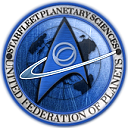Rrrresearrrch Prrroposal
Posted on 30 Aug 2013 @ 8:38am by Ensign S'Ranna T'Srrr'Kharh
904 words; about a 5 minute read
A study of the effects of rapid orbital operations on auxiliary craft personnel
Abstract
We propose to conduct a study on the physiological, psychological and operational impact of rapid orbital operations, specifically including ascent, descent, and emergency maneuvers, on a range of personnel across a representative range of Starfleet species, in the Volga-class runabout and Polaris-class transport. Both craft operators and crew, and passengers and auxiliary personnel, will be considered for study. We wish to establish whether inertial dampeners and environmental controls are adequate to compensate to such effects as are experimentally observed, and whether additional measures such as training or and medical intervention are necessary to ensure the health and safety of personnel participating in Away Team missions.
Literature Review
Existing studies have examined traditional auxiliary craft such as the Type-6 and Type-9 shuttles in depth. [1] Significantly less attention has been given to the Volga and Polaris classes, with little research beyond initial testing that concentrated exclusively on meeting bare minimum standards of engineering. [2] Many studies are entirely devoted to craft operators, with no recognition of the likelihood of non-specialists (such as scientists, engineers, diplomatic personnel) making up a part of the standard Away Team profile. [3] A four year study commissioned by the Planetary Sciences Division was shelved owing to funding considerations, but initial findings have been made available. [4] As with much Federation research literature, profoundly anthropocentric tendencies have seen papers with a limited scope not applicable to the full array of Starfleet representative species. [5]
Methodology
A series of holosimulations will be set up and experimentally tested.
The craft used will be based on the following designs:
- Volga-class runabout
- Polaris-class transport
- Modified Volga to simulate damage incurred during mission
- Modified Polaris to simulate damage incurred during mission
The tests will include the following scenarios:
- Rapid orbital ascent
- Rapid orbital descent
- Rapid orbital evasive maneuvers
- Navigation of atmospheric phenomena (storms, EM interference, radiation, weapons fire)
These scenarios will be tested in a range of planetary conditions including the following variables:
- Gravitational strength
- Atmospheric composition
- Planetary topology
- Existence of super-orbital structures
Such variables shall only be considered within the reasonable range of probably Away Team missions.
Available research participants will dictate the composition of the subject group, but supplementary holographic subjects can be created where necessary to ensure the following overall representation:
- Representatives of flight control personnel
- Representatives of mission specialists
- A range of species, genders, ages, and levels of physical conditioning and experience
Health and Safety
The study will be conducted through holosimulations programmed to accurately replicate the research parameters. This is considered to be the safest, most practical, and most cost effective approach, and will permit destructive testing without damaging actual craft or risking the lives of participants. Participation will be on a strictly voluntary basis subject to medical clearance, with those taking part apprised of the risks beforehand and monitoring during and after the experiments. A member of the medical and/or counselling team will available throughout each test. Representatives of science and engineering departments will be consulted on any issues resulting from the tests. Holodeck safety protocols will remain at standard by default, with alterations made only in consultation with senior staff and medical consultants. Participants will be free to leave the study at any point.
Bibliography
(1) Bryynn'knnga et al., "The Type-9 And Its Pilot: Summary Of Recent Findings", Federation Journal of Applied Engineering
(2) Bryynn'knnga et al., Chapter 9: "Looking Forward In Design: Pilot Response And Reaction", Principles of Starfleet Engineering (2nd. ed.)
Caitian Advanced Technologies, For A Better World
Chashiep et al., "A Neuropathological Study Of The Effects Of Rapid Orbital Ascent On Flight Operators", Bolarus IX Journal of Medicine
K'Zei et al., "Recent Trend In Flight Operations Research", Starfleet Review of Biomedical Science
Liana et al., Chapter XXII: "Species Considerations", Challenges In Engineering
Priols, "And Where Does The Tail Go?: Engineering In A Multicultural Galaxy", New Aspects of Starfleet Operations Research
Simon et al., "Experimental Observation Of Cortical Indicator Injections In Humanoid Subjects During Controlled Flight", Presences: A Journal of the Mind
Starfleet Corps of Engineers OpenEng Summary 979c, Revisions and Recommendations for Operation of the Volga-class Runabout
Starfleet Planetary Sciences Division, Initial Findings Of The Working Party On Revised Away Team Mission Protocol Recommendations 2385-470
Starfleet Planetary Sciences Division, Initial Findings Of The Working Party On Revised Away Team Mission Protocol Recommendations 2385-2031
Williams et al., "Polaris Field Trials: Final Report", (Starfleet Operations Internal Memorandum #43-D-8)
Woods and Hartman, Beyond Humanity: Starfleet's Biggest Problem
yii-Wouqu et al., "Shakedown Reports And Engineers Logs, 2386-2389: Historical Perspectives", Metaanalytical Research Methods





 RSS Feed
RSS Feed